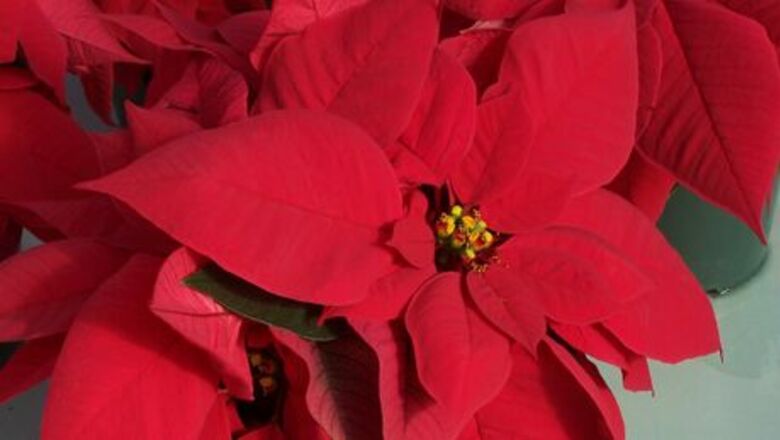
views
X
Research source
[2]
X
Research source
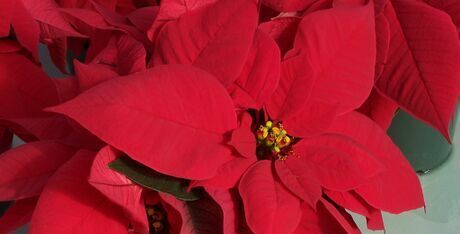
Purchase plants from a local garden store. Poinsettias flower naturally from November to January, the Christmas holiday season, in temperate regions of the Northern Hemisphere. Ideally, select plants that are on display in a greenhouse. The plants thrive when they are managed in a moderately sunny location. Most plants, however, will be sold from displays in grocery, hardware, and department stores. If possible, choose plants that have been put on display recently. Poinsettias will deteriorate somewhat in the low-light interior of a typical store, especially if they are displayed on the packed shipping carts. Plus, the store staff may not keep plants watered as well as they could be.
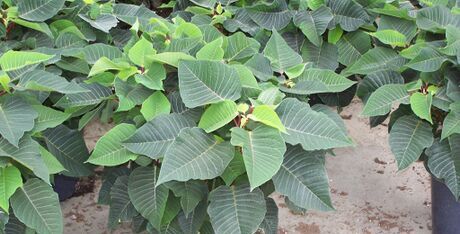
Select plants that have bright green leaves. This may be difficult to determine if the plants are packaged in a plastic plant sleeve.
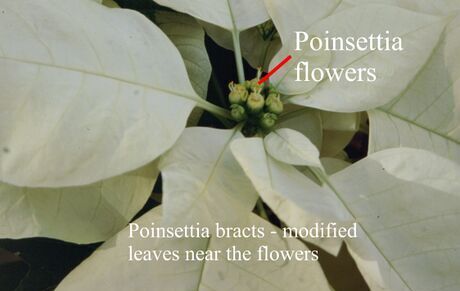
Select plants that have a normal cluster of flowers on the top of the stem. Additionally, the petal-like bracts should be free of damage. The flowers are the small round balls at the top of the stem. They are in the center of the petal-like bracts. The flowers should look normal and all the flowers should be present. The male and female flowers are in these balls. You may see them later as the flowers develop on the plant.
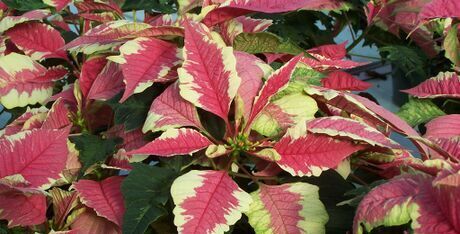
Select plants that are packaged in a plastic plant sleeve. If temperatures are at or below 35°F (2°C), don't leave the plants in a cold vehicle. Additionally, close the sleeve over the top of the plant when you take it outside.
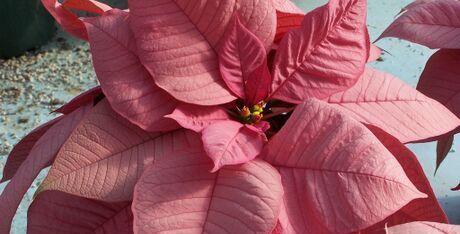
Place poinsettias anywhere in your home for holiday decoration. However, the color of the leaves and petal-like, colorful bracts will be best where temperatures are 60-70°F (15-21°C) and when the plants receive 1-3 hours of direct sunlight every day. Keep your poinsettia by a sunny window if you plan to grow it as a houseplant after the holidays. Do not place your poinsettia in a location where the room temperature may fluctuate; this includes next to fireplaces, fans, and heaters.
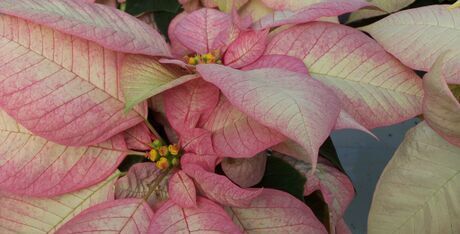
Add water to your poinsettia regularly. Check to see if it needs more every 4-5 days. It’s easiest to simply lift the pot and plant to check its weight. If it feels light, add water; if it feels heavy, don’t add water. If you prefer, stick your finger into the potting soil to determine the moisture level. Most people leave the pot cover (foil or plastic) on the pot. It can act as a saucer to collect water. Be sure the plant is dry before adding water in this situation, so plant roots are not damaged.
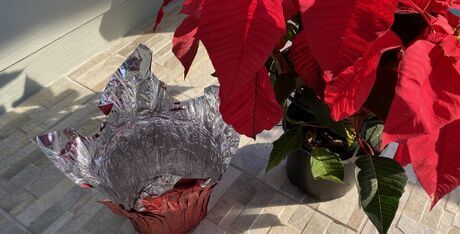
Remove the pot cover, if you wish, and place the plant in a saucer. It is easier to manage watering without a pot cover.
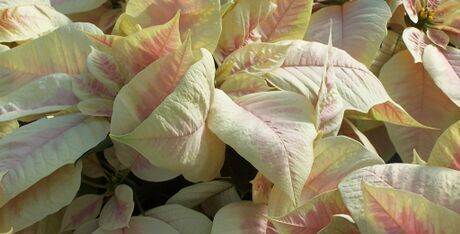
Avoid adding fertilizer to a poinsettia during the holiday season. This is especially true if you plan to discard the plant after the holidays.
Add fertilizer once in January, February and March if you plan to grow the poinsettia as a houseplant. In April, remove the flowers, the petal-like, colorful bracts and a couple of inches of the top of the stem. As light levels increase, new shoots will develop on the plant, as long as it receives enough light and fertilizer. Fertilize the plant every 2-3 weeks until next September. The bracts surround the "true" flowers of the poinsettia, which are tiny, yellow, spherical structures at the tops of the stems.











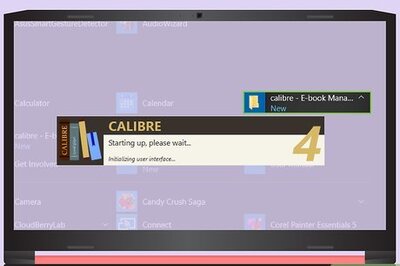






Comments
0 comment